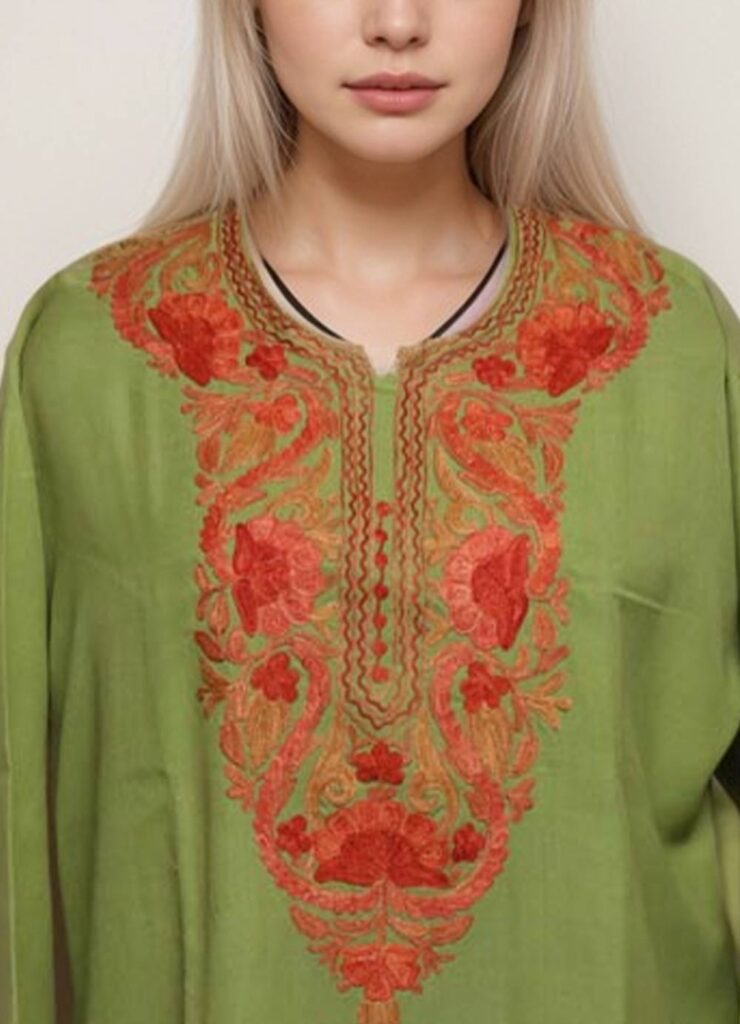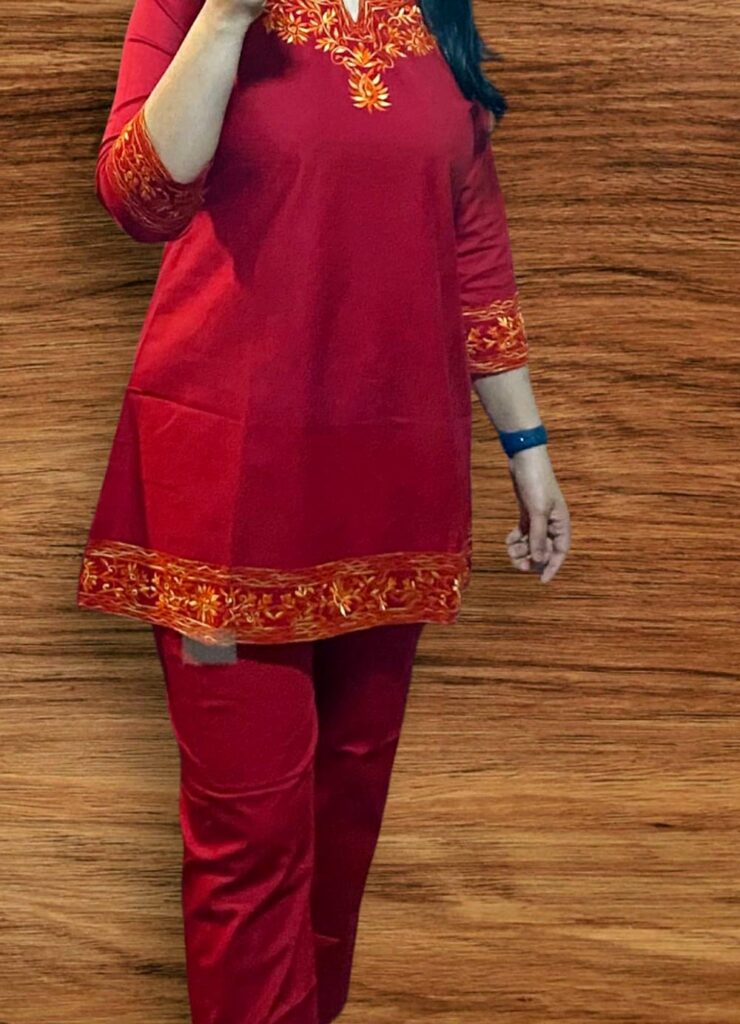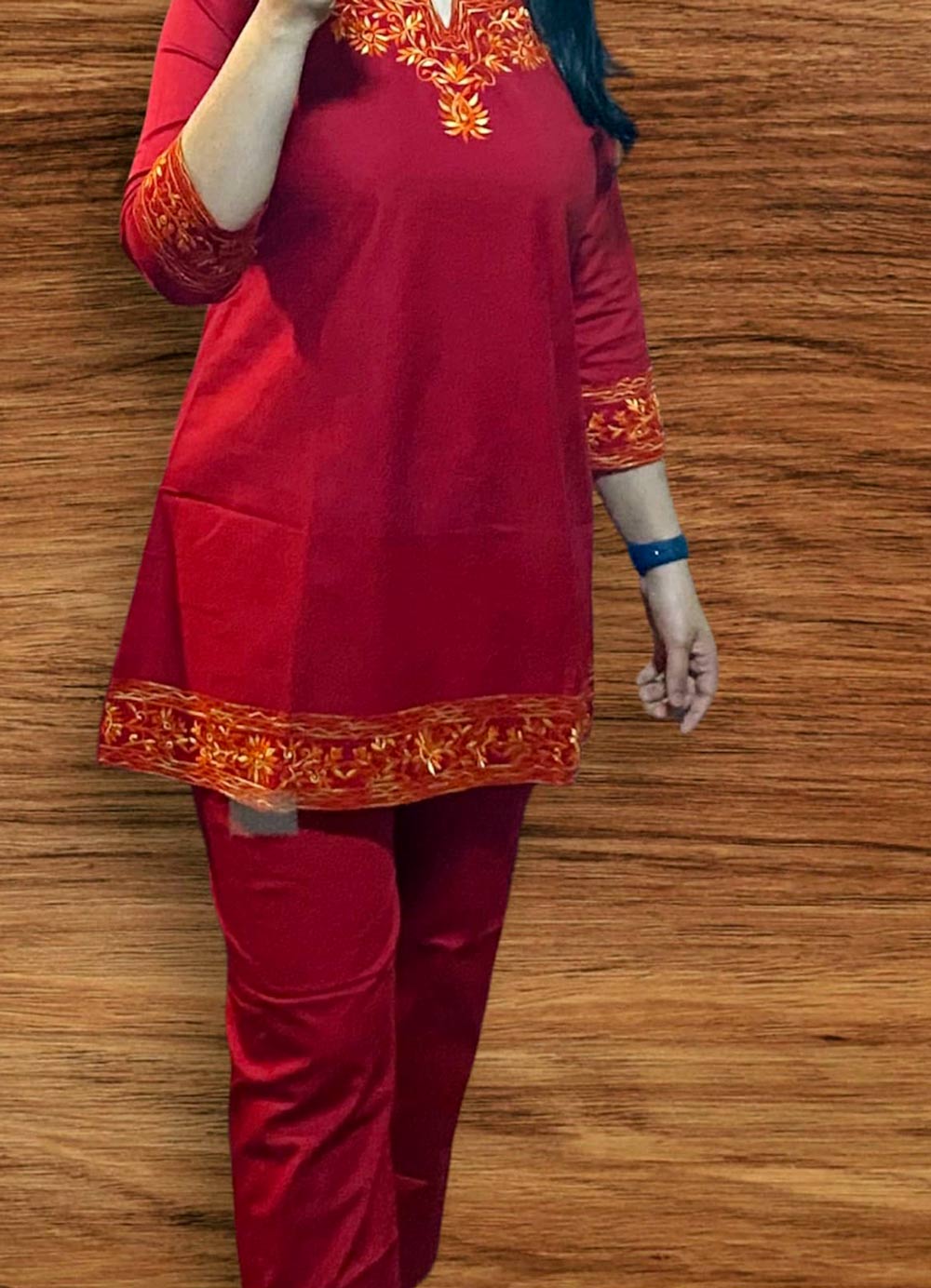The Kashmiri kurta stands as a testament to the rich heritage and vibrant culture of Kashmir. This traditional garment, with its intricate designs and high-quality fabrics, has become synonymous with elegance and comfort. In this comprehensive guide, we explore the history, craftsmanship, styles, and cultural significance of the Kashmiri kurta, highlighting why it deserves a special place in every wardrobe.
Historical Context of Kashmiri Kurta Dress
The origins of the Kashmiri kurta dress can be traced back centuries, rooted deeply in the cultural tapestry of the region. Historically, this garment was worn by both men and women as part of their daily attire, reflecting the lifestyle and values of the Kashmiri people. It was not just a clothing item but a reflection of one’s social status, craftsmanship, and connection to cultural traditions.
The art of making kurtas flourished during the Mughal era, when the region was known for its rich textiles. Influenced by Persian designs, the Kashmiri kurta began to incorporate intricate embroidery and vibrant colors, making it a coveted piece among the elite. Over the years, the kurta has evolved, but its essence remains rooted in tradition.

Craftsmanship of Kashmiri Kurtas
1. Materials Used
One of the defining features of a Kashmiri kurta is the use of premium materials. Most kurtas are crafted from wool, silk, or cotton, ensuring comfort and durability. Pashmina wool is particularly sought after for its softness and warmth, making it ideal for colder climates. The choice of material not only enhances the aesthetic appeal but also contributes to the overall comfort of the wearer.
2. Intricate Embroidery Techniques
The hallmark of a Kashmiri kurta is its exquisite embroidery. The use of traditional techniques like Sozni, Aari, and Kashida gives each kurta a unique character. Sozni embroidery involves fine needlework, creating delicate patterns that are often floral or geometric. Aari work, on the other hand, uses a hooked needle to create vibrant, decorative motifs. These intricate designs transform a simple kurta into a work of art.
3. Tailoring and Design
The tailoring of a Kashmiri kurta is an art form in itself. Each piece is carefully crafted, ensuring a perfect fit and comfortable wear. The kurtas come in various styles, from long and flowing designs to shorter, contemporary cuts. The attention to detail in tailoring, combined with high-quality fabrics, makes the Kashmiri kurta a staple for both traditional and modern attire.

Styles of Kashmiri Kurta Dress
1. Traditional Kashmiri Kurtas
Traditional Kashmiri kurtas are characterized by their vibrant colors, intricate designs, and flowing silhouettes. Often worn during festivals and special occasions, these kurtas are paired with salwar or churidars. The combination of traditional styling and embroidery showcases the rich heritage of Kashmir.
2. Contemporary Designs
In recent years, the Kashmiri kurta has undergone a transformation, adapting to modern fashion trends. Contemporary kurtas feature sleeker cuts, bold patterns, and a mix of traditional and modern embroidery styles. These kurtas are perfect for casual outings, office wear, or even festive occasions, allowing wearers to embrace their cultural roots while staying stylish.
3. Festive and Wedding Kurtas
During weddings and festive celebrations, Kashmiri kurtas are often adorned with elaborate embroidery and embellishments. These kurtas are typically more luxurious, featuring rich fabrics like silk and intricate designs that make them stand out. They are paired with accessories like dupattas and jewelry, adding to the overall festive look.
Cultural Significance of Kashmiri Kurtas
The Kashmiri kurta is not just a garment; it is a symbol of cultural identity and pride. Wearing a Kashmiri kurta connects individuals to their heritage and showcases the artistry of Kashmiri artisans. It represents the values of craftsmanship, tradition, and community that are intrinsic to Kashmiri culture.
Furthermore, the kurta plays a vital role in various cultural events and celebrations. It is often worn during festivals, weddings, and other significant occasions, reflecting the joyous spirit of the Kashmiri people. By choosing to wear a Kashmiri kurta, individuals contribute to the preservation of this rich cultural legacy.
Caring for Your Kashmiri Kurta
To ensure that your Kashmiri kurta retains its beauty and longevity, proper care is essential. Here are some tips to keep in mind:
- Washing: Hand wash your kurta in cold water using a mild detergent. Avoid using harsh chemicals or bleach, as these can damage the delicate fabric and embroidery.
- Drying: Lay your kurta flat to dry in a shaded area, away from direct sunlight. This helps prevent color fading and maintains the integrity of the fabric.
- Storage: Store your kurta in a cool, dry place. Using a cotton garment bag can help protect it from dust and moisture, ensuring it remains in excellent condition.
Why Choose a Kashmiri Kurta?
Choosing a Kashmiri kurta is not just about fashion; it’s about embracing a piece of culture and history. The combination of traditional craftsmanship and contemporary design makes it a versatile addition to any wardrobe. Whether you’re dressing for a casual outing or a grand celebration, a Kashmiri kurta offers elegance, comfort, and a connection to heritage.
Moreover, the unique designs and high-quality materials ensure that each kurta is one-of-a-kind, allowing individuals to express their personal style while honoring Kashmiri artistry.
Conclusion
The Kashmiri kurta is a beautiful representation of tradition, artistry, and elegance. With its rich history, intricate craftsmanship, and cultural significance, it remains a beloved garment among people of all ages. By choosing to wear a Kashmiri kurta, you not only enhance your wardrobe but also celebrate the legacy of Kashmiri culture and craftsmanship.
